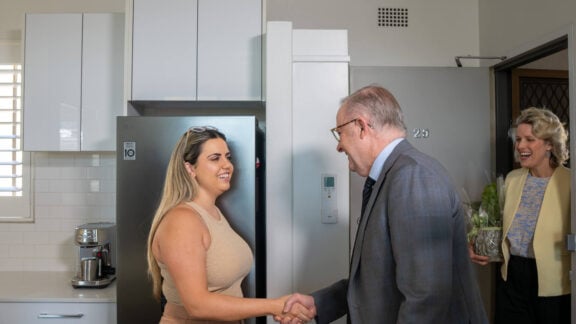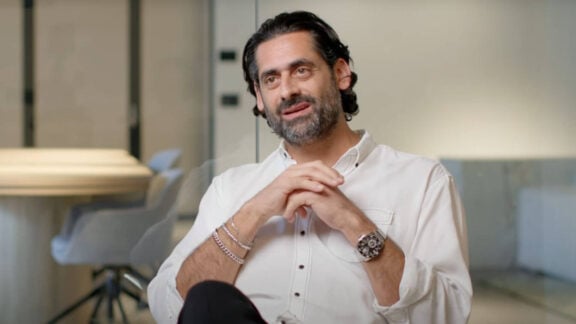“We all know of at least one domestic violence situation in our personal lives – whether it is friends or family – yet it is considered an issue that doesn’t usually happen. But if we all know someone that is affected by it, how is this an exceptional circumstance?” Dr Effie Karageorgos reflects as she explains to Neos Kosmos what motivated her to start research into the media’s portrayal of cases of domestic violence. An effort to highlight the key role journalists can play in setting the public agenda on this critical national issue that is only getting worse.
“I’m sure I’m not the only one who has been concerned about the ways that domestic violence is presented in the media. Even the words used to describe cases of domestic violence minimise the issue, and so treat it as something that infrequently happens. But is this really the case?
“The fact is that domestic violence kills at least one woman every week in Australia, and, according to a 2020 federal government report, costs the Australian economy $26 billion per year, with victims and survivors assuming around half of that cost. And this is only violence that is reported. It is in all of our interests to pay attention to this and realise that it is not something that happens to ‘someone else’, it happens around us and we all need to pay attention.”
Despite it being so frequent the Greek Australian historian states that in the research she is leading they found that across Australia, 78 per cent of news articles framed domestic violence as an individual event.
“We read 554 articles written between 2000 and 2020 across Australia that reported on domestic violence cases. 78 per cent of those articles framed domestic violence cases as individualised events, meaning they were seen as one isolated event that happened without explaining that actually domestic violence is a common, or systemic, issue in Australian society. Only 19.1 per cent of articles across Australia actually showed that domestic and family violence is systemic, and 2.9 per cent had a combination of individual and systemic explanations for the violence.”
Another concerning issue that arose from these findings is that often court reporting of individual circumstances risk deflecting attention from the culpability of violent perpetrators, and even unintentionally victim-blaming.
But, we ask her, domestic violence that leads to the death of the victim always comes as a shock to everyone, and journalists will try to fill in the gaps, which perhaps unintentionally sometimes, brings attention to the victims’ actions. But isn’t that similar also in the reporting of murders in general, where we always try to find reason to a violent act?
“It’s interesting you raise murder – because the media seem to be quite preoccupied by homicide cases. In our research 31.7 per cent of articles covered domestic-violence related homicides, but if you look at actual crime figures – in New South Wales for example in 2020 there were 38 family and domestic violence-related homicides compared with 4228 sexual assaults. In South Australia 14 homicides compared with 6421 assaults,” Karageorgos explained and stressed that “Focusing on homicide and other types of physical violence means that we’re not paying attention to the full breadth of domestic violence. Domestic violence is not just physical, it also includes emotional abuse, financial abuse or control, as well as coercive control, which on 16 November 2022 was criminalised in New South Wales, with other states almost certainly to follow. So the media also perpetuates a very limited view of what domestic violence is.”
She adds that yes, we do need to find motive for any crime when we are not sure whether a suspect has actually committed the crime, “but murder is one act, at one time, and what we do know about domestic violence is that even if a homicide has occurred, it has followed sometimes years or even decades of abusive behaviour. Rather than investigating that abusive behaviour, attention is placed on the events immediately preceding the homicide due to the structure of the legal system and the priorities of law enforcement authorities out there to make an arrest. We need to expand our definition of what domestic violence is so that we can understand just how common it is and how it really can be a long term issue – particularly now, when domestic violence cases have skyrocketed as a result of the circumstances of the pandemic.”
How do you think domestic violence should be reported to reflect the true scale of the problem? we ask Dr Karageorgos.
“In our research we found that the media frames perpetrators of domestic violence in four ways. One is showing that they are a person of good character – that they are well respected by their community, so this was just an exceptional event or that it didn’t occur at all.
The second is that such violence is perpetrated by ‘a few bad apples’ – some really bad people with bad histories who would be expected to commit such crimes, who are not common in society. The third way is to focus on the other crimes committed by a domestic violence perpetrator. Yes, they did commit domestic violence, but they also set fire to a home, broke into a home, destroyed property, and often the domestic violence is minimised as a result.”
All of these representations, Karageorgos explains, tell the reader that domestic violence perpetrators are not any man who we might know, so people are less likely to take the issue seriously. “But what we do know is that domestic violence shelters and organisations are underfunded and in demand at the moment, women and children are often left homeless because they cannot access the support they need to leave abusive relationships, or they simply do not leave because of financial constraints. This is a serious issue. The numbers are very worrying, but even they do not represent the full extent of what is happening in our societies and communities.”
The media has a very important role in agenda-setting within society
Understandably, she continues, “the media are bound by laws that do not allow them to report on cases for which there has not been a conviction recorded, and we do know that most cases of domestic violence, which includes emotional abuse, financial abuse and coercive control, all of which have been receiving a lot more political and legal attention in the recent past, are not reported. So when a domestic violence-related conviction does happen, journalists will try to get as much information as they can about it, and the sources of information are usually law enforcement or lawyers, whose job is to try to explain the crime in a way that will result in a conviction, or not result in a conviction in the case of defence lawyers.”
This is where the media has can play a very important role in agenda-setting within society, according to Dr Karageorgos. “If this is the only way that the crime is reported, it means that the general public will assume that crimes only happen when there is a provoking event or circumstance. This automatically displaces blame away from the perpetrators. It wasn’t their fault because they had financial issues, or there was an argument between them and the victim, or they were a criminal anyway and the violence was just part of that.
The fact is that when violence – any violence, not just domestic violence, occurs, an active choice is made to commit that violence, no matter the circumstances surrounding the crime.”
Journalists need to work at ensuring domestic violence is framed accurately – as a systemic issue that affects many in society, is Dr Karageorgos’ says.
“A very simple way of ensuring this is to change the sources of information – use domestic violence organisations, domestic violence advocates. They have easy to access reports on their websites and frequently create packs specifically for the media on their websites. These are people who have the knowledge of the true scale of domestic violence, and using that knowledge in the media will ensure that this will be passed on to communities.”
Concluding, Dr Karageorgos believes that journalists should be getting training into the true nature of domestic violence.
“Family and domestic violence is very rarely an isolated event. It is usually something that happens in the long-term, and can take many forms, but all forms involve one person exerting control and causing harm – emotional or physical – onto another human being. Framing the violence in that way will help members of society see domestic violence for what it is, and recognise the importance of preventing it. Importantly, it will help victims themselves recognise that what is happening to them is not right and allow them to seek help.”
The research led by Dr Effie Karageorgos, will result in an academic article that will be published in the American journal Violence Against Women in 2023. Co-authors are Amy Boyle, Patricia Pender and Julia Cook.






